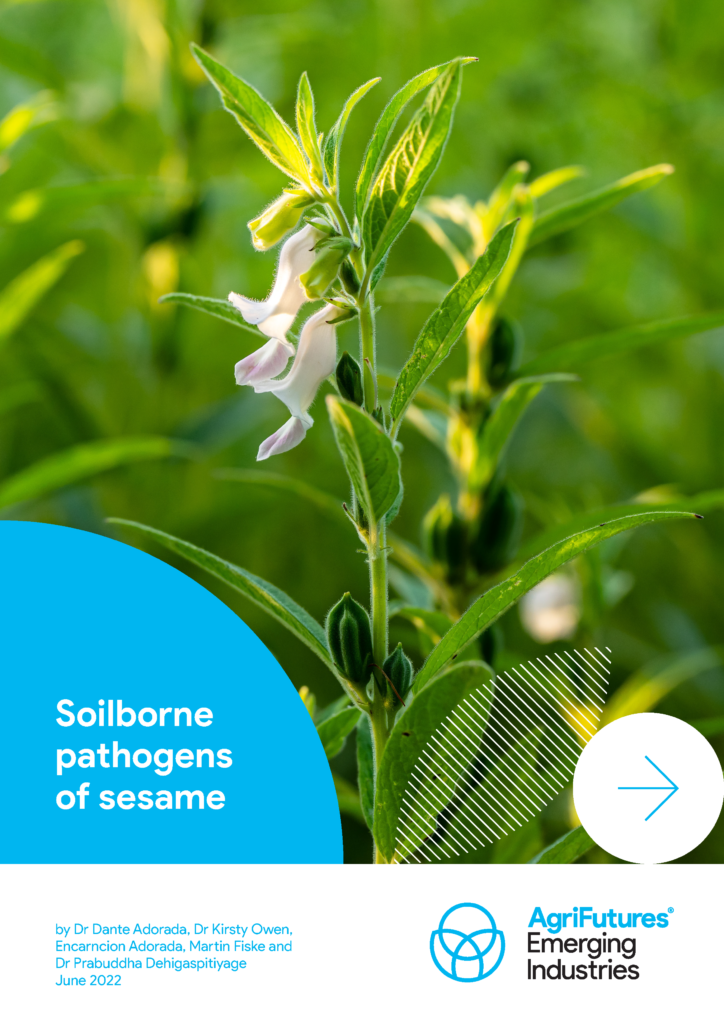Sesame (Sesamum indicum L.) is one of the oldest recorded oilseed crops. Sesame is cultivated for its edible seeds, eaten fresh or added as an ingredient in meals, and for its oil, which is used in cooking. Its antioxidant content, among other benefits, means it is also used in nutraceuticals and pharmaceuticals.
The global sesame industry is estimated to be valued at $US2.2 billion, with six million metric tonnes (mmt) produced and 2.5 mmt traded annually. Demand for sesame continues to grow and the introduction of new seed technologies provides opportunities for Australian farmers to utilise this high-value, drought-tolerant crop in their farming systems.
The expansion and intensification of sesame in Australia will drive the increased profitability of this emerging industry, however this expansion is threatened by the current lack of awareness of the significant threats from several diseases that could cause large yield losses.
This research investigated the pathogenicity of soilborne pathogens, nematodes and beneficial mycorrhiza fungi, and their effects on the health and growth of sesame plants. It has provided baseline information in understanding the potential impact of three commonly found soilborne pathogens and beneficial fungus in Australia’s northern region, which when extended to industry stakeholders will allow sound management strategies for these diseases to be developed.
The integration of genomic resources, crop production and protection techniques, post-harvest practices, crop improvement programs, and capacity building will play a crucial role in successful sesame production in northern Australia.





